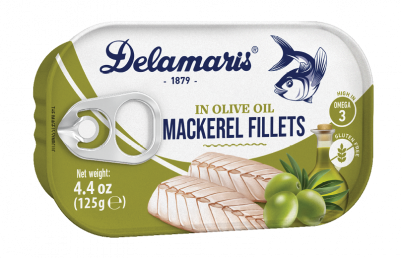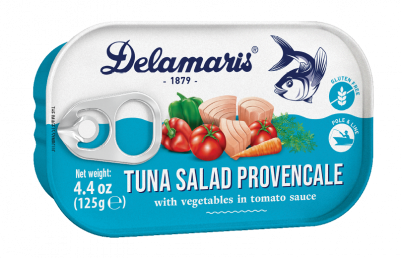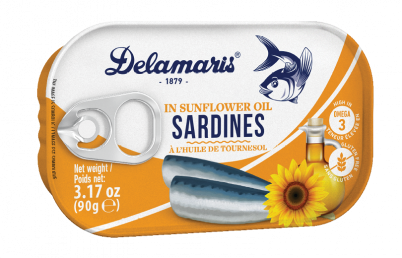
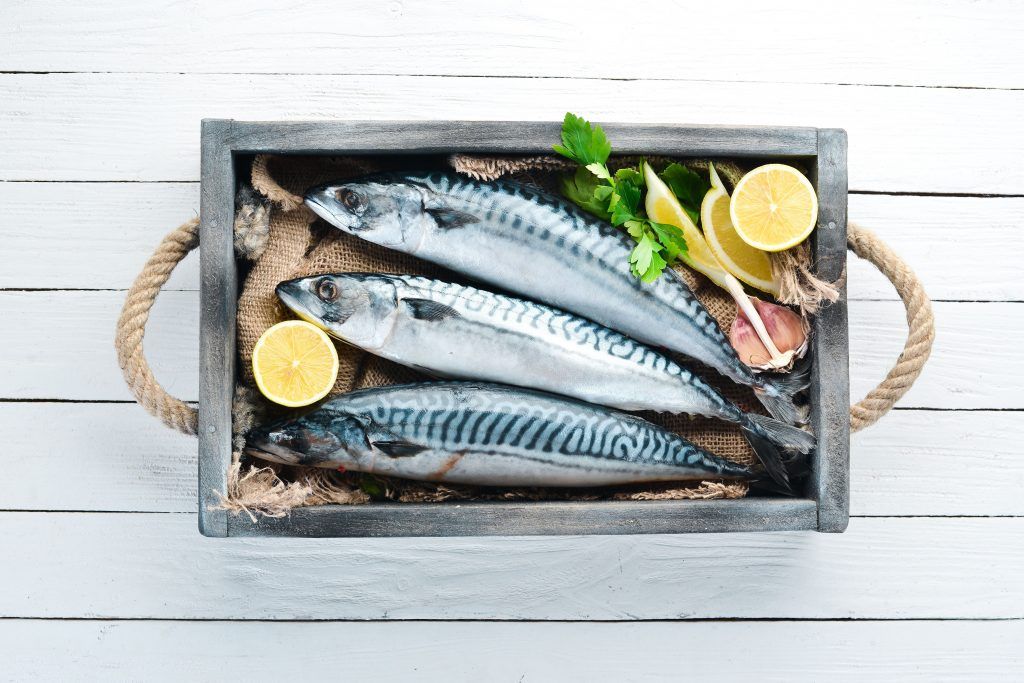
Mackerel (Lat. Scomber spp.), used for products that combine fish and vegetables, in fillet form or in our Tourist pâté, is a blue fish caught all over the world. It has a slender, streamlined body and deeply forked tail; its belly is silver and its body is covered in very small scales. Feeding mainly on sardines, mackerel shoals are usually found closely following large shoals of sardines and other small fish, so fishermen usually catch them together. Mackerel form large shoals close to the sea surface. Because they are caught in large quantities and become inedible quickly, they are often canned. Mackerel grow up to 45 cm long and can reach weights of up to 1 kg, but the average size fish is around 30 cm in length and between 250 and 500 g in weight, the kind used in the Delamaris’ products. It reaches sexual maturity in its third year and can live up to 20 years. The meat of this fish is tasty, dark in colour, and can be fatty. It can be bought fresh, frozen, smoked and canned.

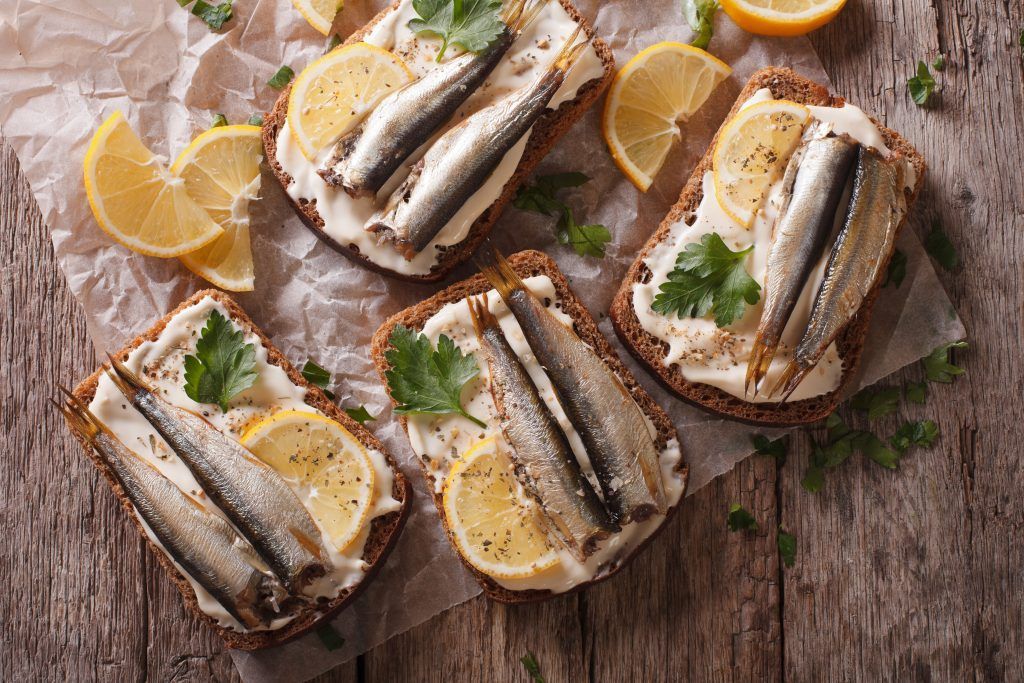
We use the Adriatic sardine, Sardina pilchardus, a blue fish named after the Italian island of Sardinia, where it was once found in great abundance, in our products featuring sardine for its special flavour. It can also be found in shoals in the Mediterranean Sea and Atlantic Ocean. In the winter, when it spawns, it withdraws to deep waters and comes close to the coast in the summer. It has a slim, streamlined body with quite large scales and upwards-jutting jaws. Its back is bluish-silver and its sides and belly white and silver. When fully- grown, it’s between 20 and 25 cm long. The sardine is classified as a fatty fish, the autumn sardine being fattier and tastier, and its delicious meat makes it one of the most sought-after blue fish. It is most often caught at night when it comes close to the surface to feed on planktonic and other larger organisms.

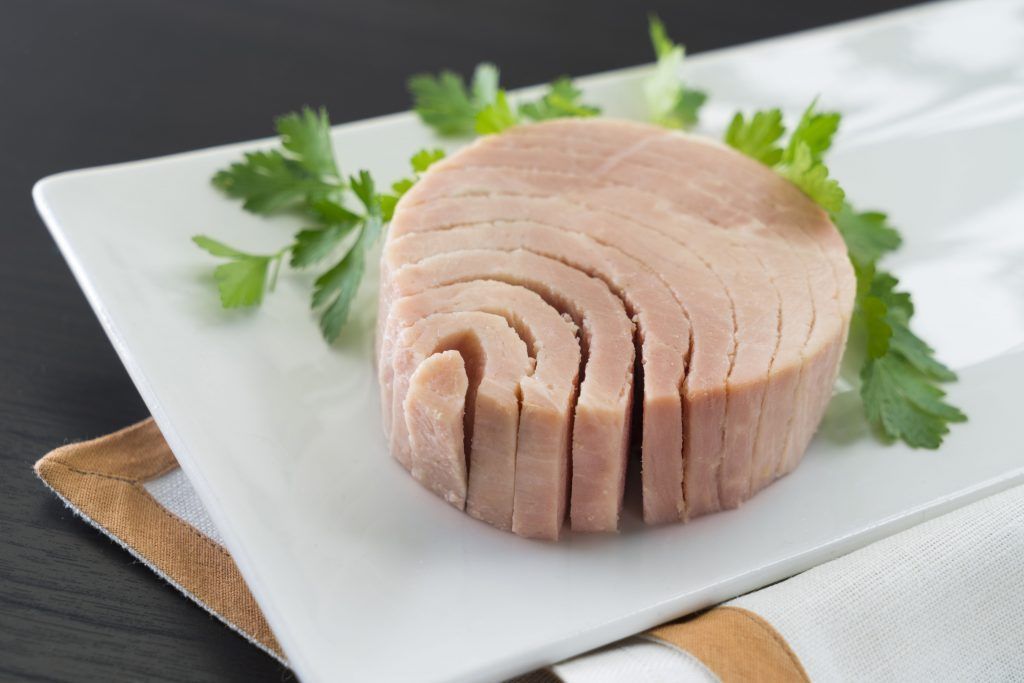
Tuna (Lat. Thunnus spp.) is a large white fish living in tropical and sub-tropical seas all over the world. It has a strong and streamlined body, which helps it swim fast. Its head is large and pointed, its body dark blue on the upper side and greyish or silver on the lower half and towards the head. It feeds on other fish, crab and squid. It is sensitive to low oxygen concentrations and is therefore found up to 250 metres below the surface. It can survive in quite cold seas despite its higher body temperature and breeds in the summer. Tuna grow up to four metres long and can reach weights of up to 600 kilograms, but its average weight is around twelve kilograms. Tuna is a highly esteemed fish so trade in it is big; approximately 4 million tons are caught annually, which is why it is one of the most endangered fish in the sea. As tuna grew in popularity, several ways developed to catch it. Three years ago, the International Commission for the Conservation of Atlantic Tunas (ICCAT) decreed that tuna fishing is only allowed in the first half of the year.
Anchovy
Delamaris is a mackerel specialist, but that’s not all. It also offers anchovy, tuna and other delicacies, such as mussels and anchovy:
Anchovy (Lat.Engraulis spp.) is a smaller fish, which fully-grown can be between 15 and 20 cm in length. It has a slender, streamlined body and jutting jaws. Its back is green-blue, its sides and belly silver, and has darker longitudinal stripe on its sides. Many types of anchovy can be found in abundance in the Mediterranean Sea, and Atlantic, Indian and the Pacific Oceans, but they’re not waters that are too warm or too cold.
Read more
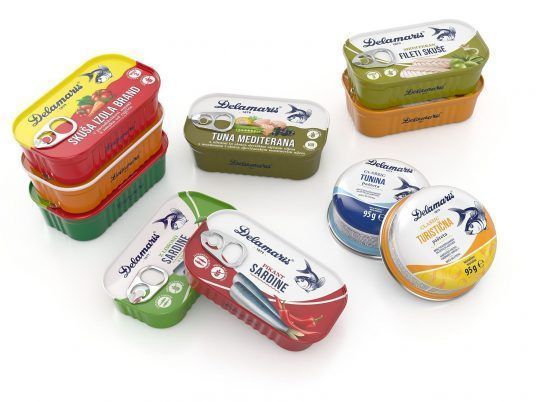
So many flavours! Which one to choose?
We have a wide range of different flavours for you. There’s something for everyone. You can choose tuna or mackerel, with or without added vegetables and tomato sauce. Are you ...

We’re proud of our fish can’s rich history
Slovenian trademarks are the product of the diligent hands of many generations proudly creating the future. Delamaris is a collection of stories and flavours, and our knowledge and tradition of ...

Fish is a source of vitamin D
Delicious fish products with vegetables or in oil and fish pâtés are popular ingredients in cuisine no matter the time of the day and recognised for their beneficial effect on ...

